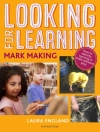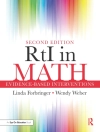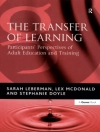This practical book introduces a unique socio-ecological framework for understanding the field of mixed methods research and its different perspectives. Based on the framework, it addresses basic questions including: What is the mixed methods research process? How is mixed methods research defined? Why is it used? What designs are available? How does mixed methods research intersect with other research approaches? What is mixed methods research quality? How is mixed methods shaped by personal, interpersonal, and social contexts? By focusing on the topics, perspectives, and debates occurring in the field of mixed methods research, the book helps students, scholars, and researchers identify, understand, and participate in these conversations to inform their own research practice.
Mixed Methods Research is Volume 3 in the SAGE Mixed Methods Research Series.
Зміст
Part I: A Conceptual Framework for the Field of Mixed Methods Research
Chapter 1: Why a Guide to the Field of Mixed Methods Research? Introducing a Conceptual Framework of the Field
The Essence of Mixed Methods Research
The Field of Mixed Methods Research
The Need for a Guide for Navigating the Field of Mixed Methods Research
The Socio-Ecological Framework for the Field of Mixed Methods Research
Application of the Socio-Ecological Framework to a Mixed Methods Study
Using the Socio-Ecological Framework to Guide This Book
Chapter 2: What Is the Core of Mixed Methods Research Practice? Introducing the Mixed Methods Research Process
The Role of the Mixed Methods Research Process in the Field of Mixed Methods Research
Major Perspectives About the Mixed Methods Research Process
Issues and Debates About the Mixed Methods Research Process
Applying the Mixed Methods Research Process in Research Practice
Part II: Methodological Content Considerations for Mixed Methods Research Practice
Chapter 3: What Is Mixed Methods Research? Considering How Mixed Methods Research Is Defined
The Role of Definitions in the Field of Mixed Methods Research
Terminology Used to Name Mixed Methods Research
Major Perspectives for Defining Mixed Methods Research
Examples of Mixed Methods Research Definitions
Issues and Debates About Definitions
Applying Definitions in Mixed Methods Research Practice
Chapter 4: Why Use Mixed Methods Research? Identifying Rationales for Mixing Methods
The Role of Rationales in the Field of Mixed Methods Research
Major Perspectives About Rationales for Mixed Methods Research
Examples of Rationales for Mixed Methods Research
Issues and Debates About Rationales
Applying Rationales in Mixed Methods Research Practice
Chapter 5: How to Use Mixed Methods Research? Understanding the Basic Mixed Methods Designs
The Role of Designs in the Field of Mixed Methods Research
Major Perspectives About Designs for Mixed Methods Research
Basic Designs for Mixed Methods Research
Issues and Debates About the Mixed Methods Research Designs
Applying the Mixed Methods Research Designs in Research Practice
Chapter 6: How to Expand the Use of Mixed Methods Research? Intersecting Mixed Methods With Other Approaches
The Role of Advanced Applications of Designs in the Field of Mixed Methods Research
Major Perspectives About Advanced Applications of Designs for Mixed Methods Research
Examples of Advanced Mixed Methods Designs
Issues and Debates About Intersecting Mixed Methods With Other Approaches
Applying Advanced Applications of Designs in Mixed Methods Research Practice
Chapter 7: How to Assess Mixed Methods Research? Considering Mixed Methods Research Quality
The Role of Quality in the Field of Mixed Methods Research
Major Perspectives About Quality for Mixed Methods Research
Examples of Quality for Mixed Methods Research
Issues and Debates About Quality in Mixed Methods Research
Applying Quality in Mixed Methods Research Practice
Part III: Contexts That Shape Mixed Methods Research Practice
Chapter 8: How Do Personal Contexts Shape Mixed Methods? Considering Philosophical, Theoretical, and Experiential Foundations for Mixed Methods Research
The Role of Personal Contexts in the Field of Mixed Methods Research
Major Perspectives About Personal Contexts for Mixed Methods Research
Stances About Personal Contexts for Mixed Methods Research
Issues and Debates About Personal Contexts and Mixed Methods Research
Applying Personal Contexts in Mixed Methods Research Practice
Chapter 9: How Do Interpersonal Contexts Shape Mixed Methods? Considering Interactions With Research Participants, Teams, and Reviewers in Mixed Methods Research
The Role of Interpersonal Contexts in the Field of Mixed Methods Research
Major Perspectives About Interpersonal Contexts for Mixed Methods Research
Examples of Addressing Interpersonal Contexts in Mixed Methods Research Practice
Issues and Debates About Interpersonal Contexts and Mixed Methods Research
Applying Interpersonal Contexts in Mixed Methods Research Practice
Chapter 10: How Do Social Contexts Shape Mixed Methods? Considering Institutional, Disciplinary, and Societal Influences on Mixed Methods Research
The Role of Social Contexts in the Field of Mixed Methods Research
Major Perspectives About Social Contexts for Mixed Methods Research
Considering the Status of Mixed Methods Research Within Social Contexts
Issues and Debates About Social Contexts and Mixed Methods Research
Applying Social Contexts in Mixed Methods Research Practice
Part IV: Concluding Thoughts
Chapter 11: Where Is Mixed Methods Research Headed? Applying the Field in Your Mixed Methods Research Practice
Utility of Our Socio-Ecological Framework to Guide Your Mixed Methods Research Practice
Applying the Framework: Understanding the Messiness of Mixed Methods Research
Applying the Framework: Implementing Your Mixed Methods Research Studies
Applying the Framework: Developing Your Expertise in Mixed Methods Research
Applying the Framework: Future Developments in Mixed Methods Research
Про автора
Nataliya Ivankova, Ph D, MPH, is professor in the Department of Health Services Administration with a dual appointment in the School of Nursing at the University of Alabama at Birmingham. She is an applied methodologist working at the intersection of mixed methods, qualitative, community-based, and translational research. She has developed a methodological framework for a sequential quantitative to qualitative mixed methods design that was used in this study. She teaches courses in mixed methods and qualitative research, mentors doctoral students and junior faculty, and serves as a lead methodologist on funded projects. She also directs a graduate certificate program in Applications of Mixed Methods Research. She is a founding co-editor of the Mixed Methods Research Series with SAGE Publishing and is an associate editor for the Journal of Mixed Methods Research and a qualitative research editor for the American Journal of Health Behavior.












